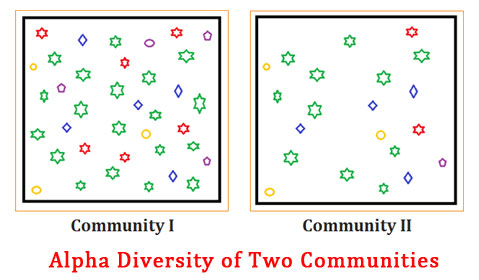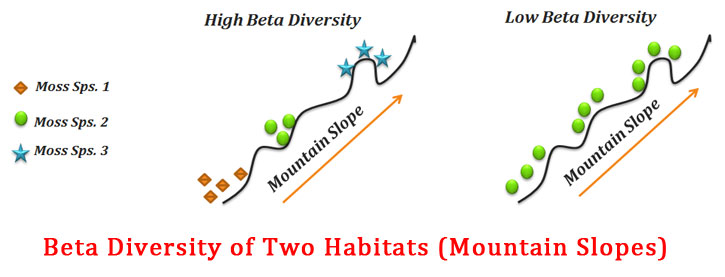Look deep into nature, and then you will understand everything better’
Albert Einstein
What is biodiversity?
Biodiversity- definition: “variability among living organisms”. Biodiversity is the variety and variability of genus, species and ecosystem between and within. It is the number of different organisms & their relative frequency in an ecosystem. The term Biodiversity is coined by Walter Rosen, 1985. About 50 million sps. of plants, animals & microbes are existing in the world. Among this only 2 million are identified so far. The present article discusses the Significance of Biodiversity and its Classification.
@. Biodiversity also includes: Variability of genus, Variability of varieties, Variability of species, Variability of populations in different ecosystems, Variability in relative abundance of species
@. Knowledge of biodiversity is essential for sustainable utilization of resources
@. Biological resources provide us: Nourishment, Clothing, House, Fuel, Medicine and Revenue
Levels of biodiversity
@. Biodiversity can be considered in THREE levels
(1). Genetic diversity: Genetic variation within species, both among individuals within single population and among geographically separated populations
(2). Species diversity: Biodiversity covers the full range of species on earth. Includes all the species, microbes, viruses, bacteria to animals and plants
| You may also like NOTES in... | ||
|---|---|---|
| BOTANY | BIOCHEMISTRY | MOL. BIOLOGY |
| ZOOLOGY | MICROBIOLOGY | BIOSTATISTICS |
| ECOLOGY | IMMUNOLOGY | BIOTECHNOLOGY |
| GENETICS | EMBRYOLOGY | PHYSIOLOGY |
| EVOLUTION | BIOPHYSICS | BIOINFORMATICS |
(3). Ecosystem / community diversity: Biodiversity also includes variations in the geographical communities. This includes: Variations in the community in which the species lives, The ecosystem in which the community exists, Interaction within and between biotic and abiotic components
Types of biodiversity:
There are different types of biodiversity can be observed in nature, they are
(1). Genetic diversity: diversity in the alleles of a single gene
(2). Organismal diversity: differences in morphology, anatomy, behaviour of organisms
(3). Population diversity: variations observed quantitative ecological parameters such as frequency, density, abundance etc.
(4). Species diversity: Measures the species number variations in different genera at a particular habitat
(5). Community diversity: variability among community composition of and ecosystem and variations in the ecological interactions
(6). Ecosystem diversity: deals with the variations of interdependence of biotic and abiotic factors in the ecosystem
(7). Landscape diversity: measures the species composition in different landscapes
(8). Biogeographic diversity: diversity observed in geological and geographic history over a large period of time
Measuring biodiversity:
Ø. At simplest level: biodiversity is the species richness
Ø. Various levels/parameters of measuring the biodiversity are:
(1). Alpha diversity
(2). Beta diversity
(3). Gamma diversity
 (1). Alpha diversity:
(1). Alpha diversity:
Ø Alpha diversity refers to number of species in a single community at a particular time
Ø Alpha diversity is better called as species richness
Ø Alpha diversity is used to compare number of species in different communities
(2). Beta diversity:
Ø It is the measure of degree of change in species composition along with an environmental gradient
Ø Example: Beta diversity is high, if the species composition of moss communities changes successively at higher elevations on a mountain slope. Beta diversity is low if same species of moss occupy the whole mountain side

(3). Gamma diversity:
Ø Gamma diversity applies to large geographic scale
Ø Gamma diversity is the rate at which additional species are encountered as geographical replacements within a habitat type in different localities
Ø Gamma diversity is a species turnover rate with distance between sites of similar habitat or with expanding geographic areas”

Uses of biodiversity:
Ø Biodiversity, besides its ecological significance, provides a socio-economic asset to the nation
Ø Uses related to biodiversity can be grouped into three categories:
(1). Productive use
(2). Consumptive use
(3). Indirect use
(1). Productive use:
Ø Products commercially harvested from biodiversity for exchange in market
Ø Productive value of biodiversity is concerned with national income
Ø Biodiversity provides: fuel, timber, fish, fodder, fruits, honey, cereals, medicinal plants etc.
Ø In India, income from biodiversity is nearly 30% (736.88 billion rupees, 1994-95)
(2). Consumptive use:
Ø Consumptive use of biodiversity deals with natural products that are consumed directly
Ø They are goods which do not come under normal circulation of trade
Ø Example: non timber forest products, Honey collected from forests, Medicine collected from forests
(3). Indirect use:
Ø Indict use is the most significant us of biodiversity
Ø This value is related primarily with functions of ecosystem
Ø Biodiversity is very essential for: Ecological balance, Constancy of climatic features and Soil maintenance
Importance/Significance of biodiversity:
Ø Biodiversity indicates variations of life forms (species, ecosystem, biome)
Ø Biodiversity indicate the health of ecosystem
Ø Biodiversity is in part a functioning of climate
Ø Biodiversity provides services like: Air quality and purity, Climate and seasons, Water purification, Pollination and seed dispersal, Prevention of erosion
Ø Non material benefits of biodiversity are: Spiritual values, Aesthetic values, Education and knowledge systems
Ø In agriculture biodiversity assist in the recovery of major cultivar when it is under sever attack of disease or pests
Ø Biodiversity also act as a store house of germplasm of commercially important plants
Ø About 80% of humans’ food supply comes from 20 kinds of plants, but human uses at least 40,000 species, all of them are the part of biodiversity
Ø There are more plant products to be discovered from diversity, they are kept hidden in the depth of species richness
Ø Biodiversity also support in drug discovery for modern diseases
Ø Most of the drugs which are now in commercial trade are derived directly or indirectly from biological resources
Ø About 50% of drugs used in US are derived from biodiversity
Ø According to WHO, 80% of world population depends on medicines from nature (biodiversity is the integral part of nature)
Ø Many industrial materials are deriving from biological sources. These include building materials, fibbers, dyes, rubber and oil
Ø Biodiversity provide security of resources such as water, timber, paper, fibre and food
| You may also like... | ||
|---|---|---|
| NOTES | QUESTION BANK | COMPETITIVE EXAMS. |
| PPTs | UNIVERSITY EXAMS | DIFFERENCE BETWEEN.. |
| MCQs | PLUS ONE BIOLOGY | NEWS & JOBS |
| MOCK TESTS | PLUS TWO BIOLOGY | PRACTICAL |
Ø Biodiversity support leisure activities such bird watching and trucking
Ø Biodiversity also inspires musicians, painters and writers
Ø Gardening, fishing & specimen collecting are depends on biodiversity
Ø Biodiversity supports many ecosystem services that are not readily visible
Ø Biodiversity has immense role in the regulation of the chemistry of our atmosphere and water supply
Ø Biodiversity Helps in water purification, recycling nutrients and providing fertile soil
Download the PPT of this Topic…
